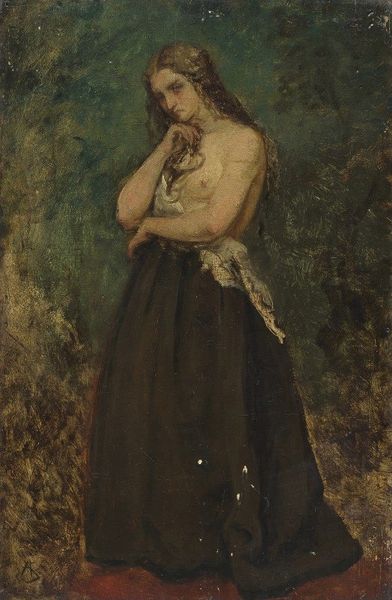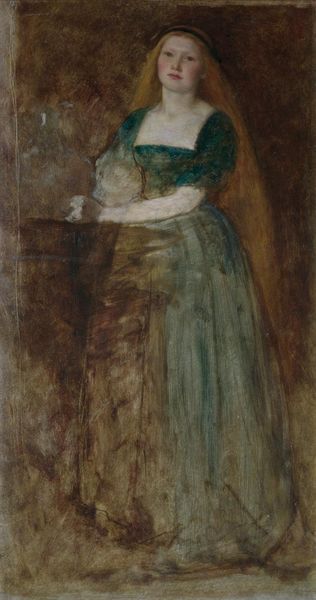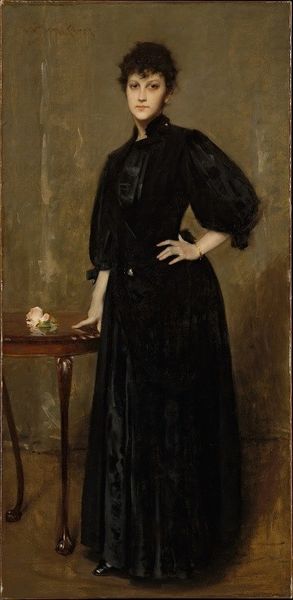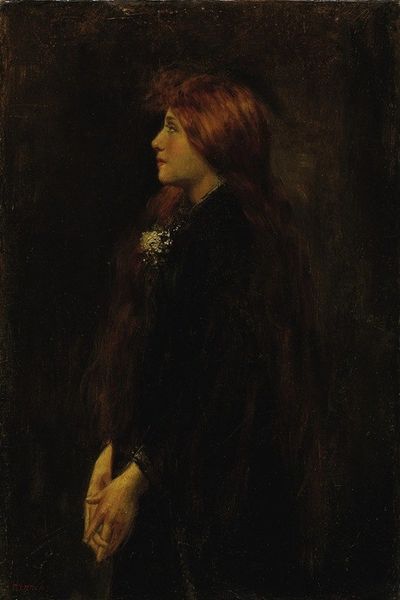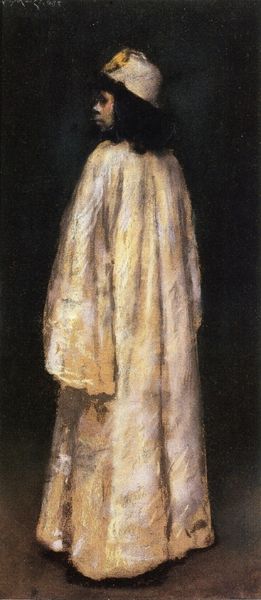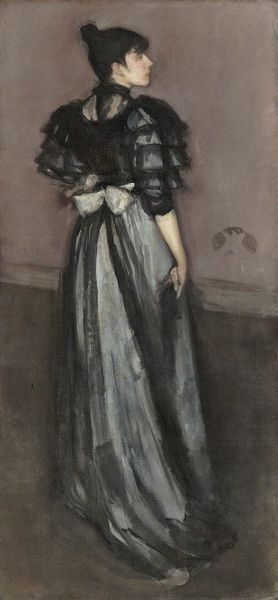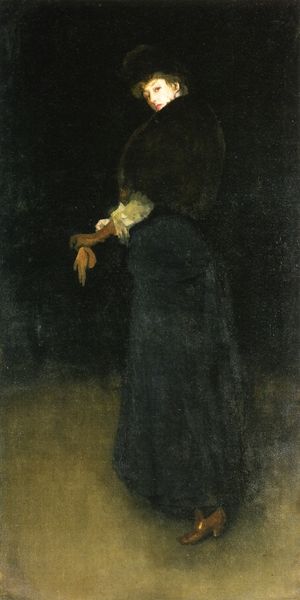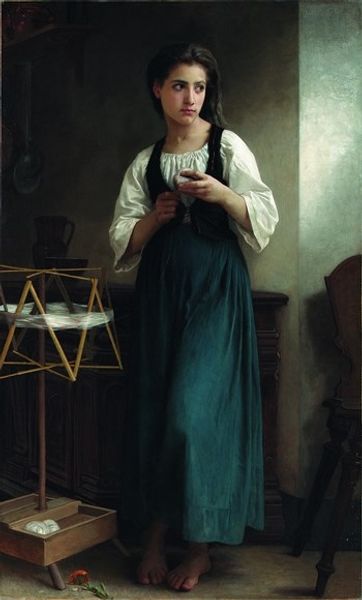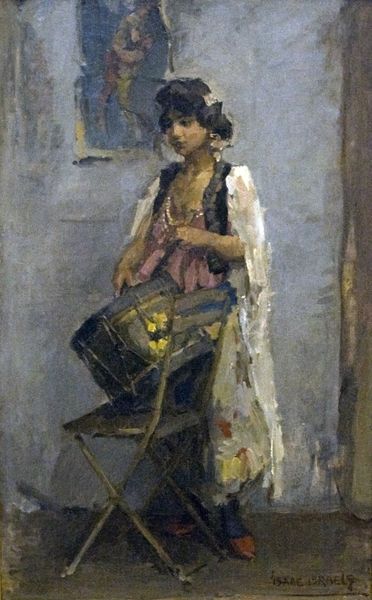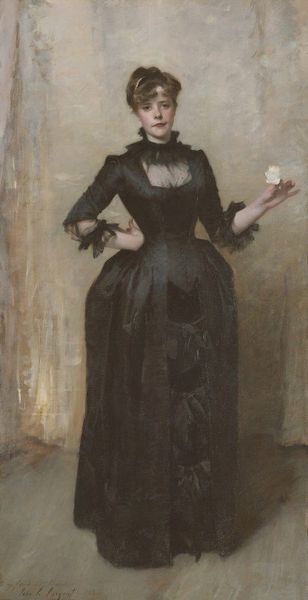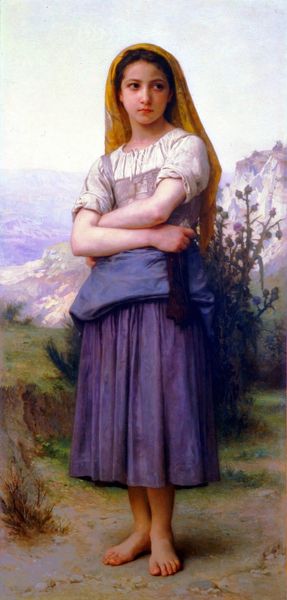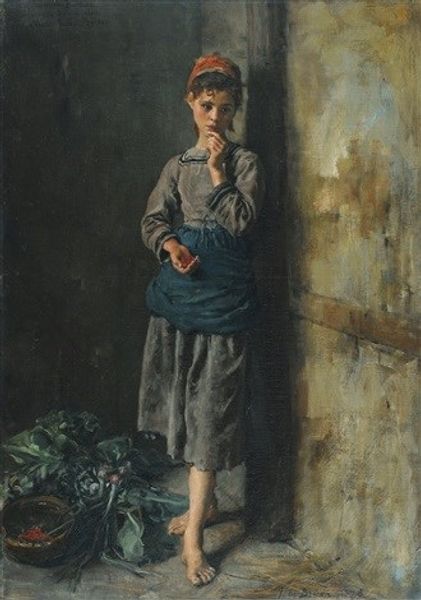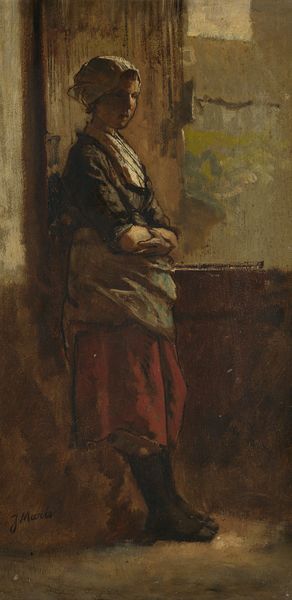
painting, oil-paint
#
portrait
#
figurative
#
painting
#
impressionism
#
oil-paint
#
genre-painting
#
academic-art
#
realism
Copyright: Public Domain: Artvee
Editor: So, this is William Merritt Chase's "The Whistling Boy," painted in 1875 using oil on canvas. I'm struck by the quiet intimacy of the scene and the contrast between the boy's worn clothing and his somewhat confident gaze. How do you interpret this work, considering the period in which it was made? Curator: What I see is a powerful commentary on the socio-economic realities of childhood during the late 19th century, cleverly masked within what seems like a simple genre scene. Consider the boy's apron and what appears to be a rather heavy pail he carries: these objects speak to his labor. What kind of work do you imagine him doing, and what does it say about his opportunities versus children of wealthier families? Editor: He looks like he might be a young apprentice of some sort? It makes me wonder if he’s really just whistling to keep his spirits up amidst hard work and drudgery. Curator: Exactly! And let’s not ignore the artistic influences Chase draws from. His visible brushwork situates the painting within Impressionism's stylistic movement. At the same time, we can also view the work through the lens of Realism, focusing on his accurate, if sympathetic, depiction of the working class. Editor: It's interesting how you position this painting as a convergence of both Impressionist aesthetics and Realist social commentary. It’s more layered than I initially thought. Curator: The layers are what make art compelling. Considering Chase’s portrayal, what message do you think he's sending to the predominantly bourgeois art audience of his time? Does it challenge their understanding of class, perhaps? Editor: That’s something to really consider, isn’t it? I now see beyond just a portrait, and more of an artwork which makes one question and think about class in society. Thanks for opening my eyes to it. Curator: Precisely. Recognizing how artworks operate within broader social dialogues—that’s how we keep the conversation evolving.
Comments
No comments
Be the first to comment and join the conversation on the ultimate creative platform.
